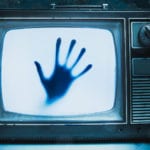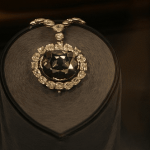 Music
Music  Music
Music  Health
Health 10 Crazy Ways Sleep Deprivation Can Affect You
 History
History 10 Enthralling Facts about the Field of Cloth of Gold
 Pop Culture
Pop Culture The Ten Greatest Engineers in Science Fiction History
 Humans
Humans Ten Journalists Who Got Caught Faking the News
 Travel
Travel 10 Best Hiking Trails in America with Breathtaking Views
 Weird Stuff
Weird Stuff The 10 Weirdest Materials That Can Be Used to Make Paper
 Crime
Crime The 10 Most Infamous Gangs in History
 Miscellaneous
Miscellaneous Ten Groundbreaking Tattoos with Fascinating Backstories
 Our World
Our World 10 Green Practices That Actually Make a Difference
 Music
Music The Cursed Decade: 10 Classic Rock Stars Who Had Low Periods in the 1980s
 Health
Health 10 Crazy Ways Sleep Deprivation Can Affect You
 History
History 10 Enthralling Facts about the Field of Cloth of Gold
Who's Behind Listverse?

Jamie Frater
Head Editor
Jamie founded Listverse due to an insatiable desire to share fascinating, obscure, and bizarre facts. He has been a guest speaker on numerous national radio and television stations and is a five time published author.
More About Us Pop Culture
Pop Culture The Ten Greatest Engineers in Science Fiction History
 Humans
Humans Ten Journalists Who Got Caught Faking the News
 Travel
Travel 10 Best Hiking Trails in America with Breathtaking Views
 Weird Stuff
Weird Stuff The 10 Weirdest Materials That Can Be Used to Make Paper
 Crime
Crime The 10 Most Infamous Gangs in History
 Miscellaneous
Miscellaneous Ten Groundbreaking Tattoos with Fascinating Backstories
 Our World
Our World 10 Green Practices That Actually Make a Difference
The Cursed Decade: 10 Classic Rock Stars Who Had Low Periods in the 1980s
The amazing regularity with which artists who rose from the tumultuous and revolutionary ’60s had a hard time in the go-go ’80s is about the most certain trope there is in pop culture. Of those who survived and were still making music in the ’80s, it might be easier to count the ones who did not have a hard time. Like the 1960s, the 1980s brought seismic cultural shifts that the previous generation just had a hard time adapting to. The punk revolution of the previous decade had cemented itself into the culture, and the rise of MTV required artists to have a visual presence where they hadn’t before.
However, the reason for these low periods may be that they were less cultural and more personal. These guys were among the first generation of mainstream rock stars, so when they started to hit their 40s, the world had never seen 40-year-old rock stars before. Forty being too old to rock is a surreal thought today, now that most of the artists on this list are still going, heading into their 80s. But the 1980s just didn’t know what to make of middle-aged rock stars.
Perhaps these old rock stars were just acting their age in the 1980s, whereas now they know better. Taking a boomer-centric view of things, it can seem as if the ’80s were the lost years for pop culture in general. However, the ’80s were actually a vibrant time for music and pop culture, just not for these old legends.
Related: 10 Darkest Rock Albums Ever Made
10 David Bowie: Cursed Years, 1984–1992
David Bowie is the outlier who proves how persistent the ’80s curse is. Bowie was among the younger of the classic rock generation, rising to fame at the tail end of the ’60s, and had an MTV-ready visual presence well ahead of its time. But the curse of the ’80s came for him, too.
Bowie began the 1980s strong—a betting man would’ve predicted he’d see it through just as successfully as he did the ’70s. The decade began with Scary Monsters (and Super Creeps), an album just as daring as his 1970s work. But with the energy of the new decade, and after a three-year hiatus he spent as a movie star, he came back with the monumentally successful Let’s Dance.
But that’s where the wheels fell off. Let’s Dance made Bowie into a global pop-rock god, a role he just wasn’t comfortable in. The subsequent two albums, Tonight and Never Let Me Down, were rote and devoid of inspiration. Bowie himself even remarked that he shouldn’t have bothered recording Never Let Me Down.
Although Bowie came back strong in the ’90s, he did so by rejecting his past catalog. It wasn’t until the 2000s that Bowie fully recovered from the ’80s by facing his past.[1]
9 The Rolling Stones: Cursed Years, 1983–1989
The Rolling Stones also started the decade strong, with Tattoo You and its single “Start Me Up,” which came to define the band. But anyone who knew the behind-the-scenes story of Tattoo You would’ve seen the warning signs. According to producer Chris Kimsey, the album was a compilation of outtakes and rough draft instrumentals that Mick Jagger added lyrics to because he and Keith Richards were “going through a period of not getting on.”
That period of “not getting on” lasted through 1986’s Dirty Work. The sessions for Dirty Work were beset by extreme levels of animosity and tension. These tensions seem to have ballooned from Keith Richards being frustrated with Jagger pursuing a solo career but quickly taking on a life of their own.
The Rolling Stones’s explosive low period came to an anticlimactic close in 1989 when everyone just decided to get over their grudges for the sake of a very, very lucrative stadium tour. Apparently, money heals all creative differences.[2]
8 Bob Dylan: Cursed Years, 1979–1992
While some of these artists just naturally grew bored, tired, uninspired, or just uncertain in the ’80s, Bob Dylan’s career suffered from a singular event that caused his 1980s low period, his 1979 evangelical conversion.
Dylan’s earlier work was shot through with religious imagery, suggesting he was always a man of faith. However, the evangelical conversion was problematic for Dylan’s bizarrely fundamentalist attitude toward his newfound faith. He told an audience in Tempe, Arizona, in 1980 that they’d go to hell for listening to Kiss before giving a rambling, convoluted, and paranoid sermon in Hartford that same year about “homosexuals” in politics.
Dylan’s evangelical years didn’t last long, beginning with 1979’s Slow Train Coming and ending with 1983’s return to secular music, Infidels. But the low period lasted for the rest of the 1980s and a chunk of the 1990s. The effects of an attitude that toxic lingered, especially for an artist whose name had previously been synonymous with revolutionary progressivism and acceptance. Dylan’s low period would be remembered much more charitably if Dylan had not alienated so many people in those three short years.[3]
7 Neil Young: Cursed Years, 1983–1988
Of those on this list, Neil Young probably coped best with the ’80s. Even his nadir, 1983’s Everybody’s Rockin’, was something of a personal triumph.
The 1980s began for Young with two confounding albums that proved he could adapt to whatever the new decade held. Re.ac.tor was punky and unfocused proto-grunge that anticipated a new sound almost a decade ahead of time. In contrast, Trans, a synth-heavy new wave sci-fi concept album, was possibly the most lateral move a folk rocker could make.
Young had just signed to Geffen Records when he offered the label a country album as his next release. They balked, insisting he give them a “rock album.” Young later said, “I almost vindictively gave Geffen Everybody’s Rockin’. Geffen wanted more rock ‘n’ roll. That was the key phrase: ‘Well, you want some f***in’ rock ‘n’ roll, do ya? Okay, fine. I can do that.”
When Geffen heard Everybody’s Rockin’, they were furious and locked Young out of the studio. The album was released unfinished, coming in at just under 25 minutes. It was a failure in every respect but one. It’s history’s greatest piece of musical malicious compliance.
Geffen then sued Young for creating music that was “musically uncharacteristic of [his] previous recordings.” Funnily enough, Young’s low period ended when he left Geffen Records five years later.[4]
6 Elton John: Cursed Years, 1979–1989
The strangest thing about Elton John’s low period is how many high points there were. Elton John’s low period began in 1979 with Victim of Love, an album that contained a 7″ mix of a disco version of Chuck Berry’s “Johnny B. Goode.” The ’80s also featured John’s own pick for his worst album, 1986’s Leather Jackets, and 1982’s Jump Up, which songwriter Bernie Taupin described as “a terrible, awful, disposable album.”
Yet 1983’s Too Low for Zero is the best album any artist on this list made during the ’80s. His 1986 live album with the Melbourne Symphony Orchestra is essential listening, and 1989’s Sleeping with the Past is a work of such breathtaking understated beauty that it’s hard to see the connection to his then-recent lows.
As for why those years were so low for John, the answer is drugs. Both John and producer Gus Dudgeon confirm that the making of Leather Jackets was coke-fueled chaos, with John remarking, “Gus Dudgeon did his best, but you can’t work with a loony.”[5]
5 Pink Floyd: Cursed Years, 1983–1994
Whether or not Pink Floyd even existed in the 1980s depends on which side of the fandom you fall on. The ’80s saw Pink Floyd singer and principal songwriter Roger Waters split from the band, while guitarist David Gilmour stepped up and took the reins as Pink Floyd’s new frontman. And like the children of divorced parents, fans’ loyalties were divided.
The Waters-less Pink Floyd didn’t manage to prove itself worthy of the name until the triumphant 1994 release of The Division Bell. In the ’80s, they were a shambling shell beset by legal troubles trading on the Pink Floyd brand to sell records and tickets.
Roger Waters called the Gilmour-led Pink Floyd a “facile, but a quite clever forgery…” This is hard to disagree with, even Pink Floyd’s own Richard Wright admitted that “Roger’s criticisms are fair.”[6]
4 Lou Reed: Cursed Years, 1983–1989
The cliche that young, hungry avant-gardists age into comfortable, uninspired adults is as persistent in pop music as the cliche that boomer legends had a hard time in the ’80s. Ironically, for such a contrarian, Lou Reed embodied both cliches.
Lou Reed’s music during the 1980s was still as perplexing as it had been during his incendiary ’60s and ’70s heyday. Still, during the ’80s, that meant an embarrassing hip-hop homage called “The Original Wrapper” (get it?). Then, there was the ridiculous phallic imagery of “My Red Joystick.” Rather than the daring art rock of Metal Machine Music, cinematically miserablist concept albums like Berlin or whatever “Black Angel’s Death Song”—written by Reed—was meant to be. There’s an ironic lightheartedness to Reed’s ’80s nonsense, and the contrast to his previous work is comical.
As the New York Times put it in 1998, “Back then he was publicly gay, pretended to shoot heroin onstage, and cultivated a ‘Dachau panda’ look, with cropped peroxide hair and black circles painted under his eyes… But in 1980, Reed renounced druggy theatrics, even swore off intoxicants themselves, and became openly heterosexual, openly married.”[7]
3 The Beach Boys: Cursed Years, 1978–2012
It’s a miracle the Beach Boys existed at all in the ’80s, but somehow, the Beach Boys not only survived the decade but scored a surprise number-one hit, “Kokomo,” which was their first chart-topper in 20 years. “Kokomo” is a notoriously hated tune, but it deserves credit for just how unlikely its hit status is.
One integral member of the group who wasn’t around for “Kokomo” was Brian Wilson. Wilson’s absence was due to Eugene Landy, Wilson’s therapist, manager, business partner, confidant, and co-writer, who insisted that Wilson cut contact with the band and with his family. Eventually, Wilson’s family obtained a restraining order against Landy, but not before he’d secured a 25% cut of the royalties from all songs written by Wilson and named himself the chief beneficiary in Wilson’s will.
At about the same time as Brian Wilson was entering treatment with Landy, his brother and bandmate Dennis Wilson was forced into rehab by the band. At that point, he was living on the streets and had lost his ability to sing or play drums. In 1983, he drowned at Marina Del Rey after drinking all day and diving into the harbor to retrieve personal items that he’d thrown from his yacht in a drunken rage three years earlier.
It’s hard not to see a connection between Dennis’s mental state during those years and his notorious friendship with cult leader Charles Manson. The Manson Family took up residence in Dennis’s home, while Dennis himself moved out when he became afraid of Manson. The Manson Family continued sending Dennis threatening messages, including a bullet. Dennis refused to testify against Manson out of fear.[8]
2 Led Zeppelin: Cursed Years, 1980–2007
The curse of the 1980s was so strong that it affected a band that actually didn’t exist for the most part in the ’80s. Led Zeppelin abruptly broke up in October 1980 after the death of drummer John Bonham.
But Led Zeppelin reunited twice during the ’80s. The first time was in 1985, for Live Aid, with Phil Collins taking Bonham’s seat behind the drums. The performance was so embarrassing that Jimmy Page and Robert Plant wouldn’t allow it to be on the Live Aid DVD released in 2004.
Robert Plant’s signature falsetto was rough and out of shape, but in addition to that, according to Page, Collins just didn’t know the songs, saying, “Robert told me Phil Collins wanted to play with us. I told him that was all right if he knows the numbers… But at the end of the day, he didn’t know anything. We played ‘Whole Lotta Love,’ and he was just there bashing away cluelessly and grinning. I thought that was really a joke.”
In 1988, they reunited again for the 40th anniversary of Atlantic Records. At that show, poor sound mixing made their usually meaty and complex songs sound thin and reedy. Heartbreakingly, the stonking anthem “Kashmir” sounded like a disco remix.
Led Zeppelin didn’t get a successful reunion until their triumphant one-off show at London’s O2 Arena in 2007.[9]
1 Black Sabbath: Cursed Years, 1983–1997
The trials and tribulations of Black Sabbath in the 1980s could fill volumes. But no one anecdote sums up the turmoil better than the fact that between January and May 1985, Jesus Christ Superstar star and televangelist Jeff Fenholt insists he was the Heavy Metal pioneer’s lead singer. While no other band member confirms this, he did give a detailed account of that period in the book Sabbath Bloody Sabbath: The Battle for Black Sabbath.
Sabbath had so many members come and go over these years that it’s plausible that some strange characters were simply forgotten.
When Sabbath’s second lead singer, Ronnie James Dio, quit the band in 1982, it probably would’ve been the end for the Birmingham foursome. The next two releases under the Black Sabbath name were not intended to be. Born Again, featuring Deep Purple’s Ian Gillan, was meant as a sort of Deep Purple/Black Sabbath supergroup, while 1986’s Seventh Star was a solo album by guitarist Tony Iommi. They were both released with the Black Sabbath name due to record company meddling because neither really sounds like Sabbath.
As Iommi was the only member of Black Sabbath on Seventh Star, this began the precedent where any group of individuals that included Iommi could call themselves Black Sabbath. For the rest of the ’80s and half of the ’90s, Black Sabbath limped along, with no two releases having the same line-up or more than two original members.
This happened against the backdrop of former frontman Ozzy Osbourne’s solo career going from strength to strength. Sabbath found their way again in 1997 when they reunited with Osbourne at Ozzfest, the band that made Ozzy’s name was now effectively his side project.[10]








